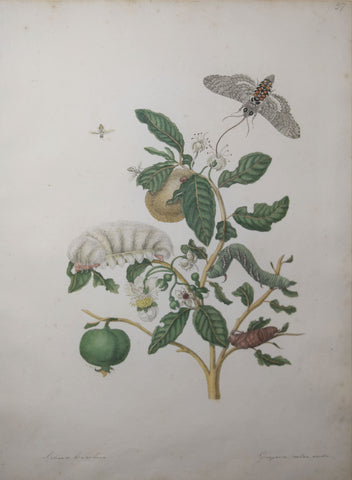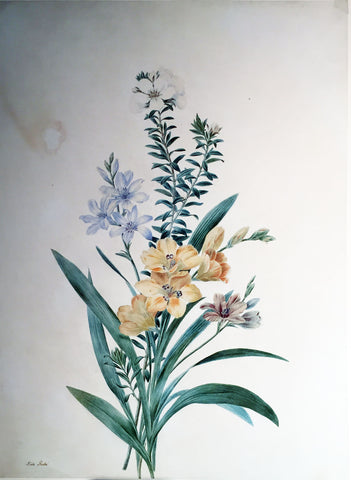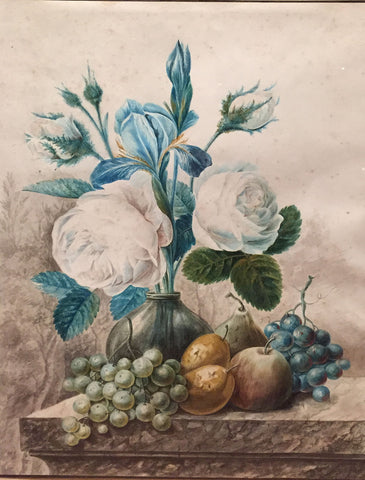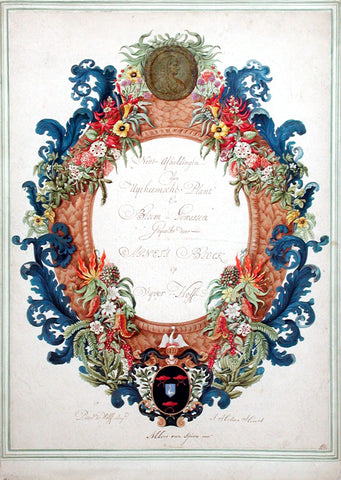
Maria Sibylla Merian, The White Guava, Plate 57
Maria Sibylla Merian
The White Guava, Plate 57
From Dissertatio de Generatione et Metamorphosibus Insectorum Surinamensium
Published: Amsterdam, J. Oosterwyk, 1719
Transfer-print Watercolor
Framed size: approx. 24 x 31"
Like the European quinces, the fruits of the guava are either round or pear-shaped. They are also distinguished by the number of seeds embedded in the soft pulp. Merian writes that a form she has not illustrated does not taste as good and contains too many seeds. The fruits of this tropical American member of the myrtle family with many seeds are made into preserves (guava cheese) and jelly, while the others are eaten in raw state. The moth, Sphinx du tabac (Manduca sexta), displayed with it caterpillar and pupa, on the left, uses the guava as a food plant. We see how with its long proboscis it sucks nectar from a blossom before which it hovers in flight. The caterpillar, placed by Merian on one of the lower twigs, pupates in the ground. The wooly-haired megalopygid caterpillar, with the yellow cocoon depicted above it, belongs to the Flannel moth Megalopygidae gen. spec.), a typical American family of lepidotera which chiefly inhabits the tropical regions of South America. The Brazilians call it the "fire animal" or "rat-animal", while the Indians of Paraguay name it the "jaguar-worm". These names refer to its dangerous poisonous hairs, its speed and its coloring. The poison of these caterpillars paralyzes for several weeks. Even the slightest touch is sufficient to cause stinging pains, swelling, fever and paralysis lasting several days. Merian knew the effect of the poisonous hairs, but still attempted to breed the creatures- a process that is still regarded as difficult. The tachina flies, or "evil flies", pictured above the white guava specimen, tended to attack these caterpillars.
We Also Recommend





